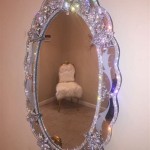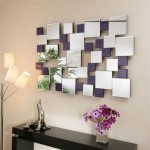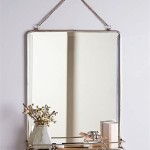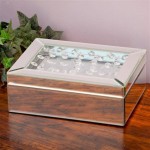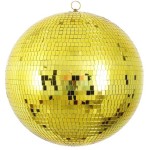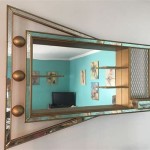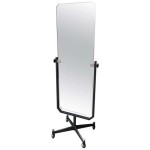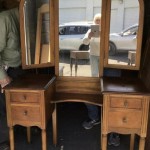## Glue for Mirrors on Wood: The Essential Guide
Hanging mirrors on wood can be a challenging task, but it's essential to select the right glue for a secure and long-lasting hold. Different types of glue are available, and choosing the most suitable one for your specific needs is crucial. This article will provide you with comprehensive information on the types of glue available, their advantages and disadvantages, and tips for choosing and using the best glue for mirrors on wood.
## Types of Glue for Mirrors on WoodThere are several types of glue that can be used for mirrors on wood, each with its unique properties and advantages. The most common types include:
- Construction Adhesive: A versatile glue that provides a strong hold and is suitable for various surfaces, including wood and glass. It's a popular choice for large mirrors due to its high strength and ability to support weight.
- Epoxy Adhesive: A two-part adhesive that forms a permanent bond and is resistant to moisture and temperature changes. It's ideal for heavy mirrors or those placed in areas with high humidity.
- Liquid Nails: A strong adhesive that cures quickly and is resistant to vibration. It's suitable for small to medium-sized mirrors and is commonly used in commercial applications.
- Mirror Adhesive: A specialized glue specifically designed for adhering mirrors to various surfaces, including wood. It provides a high bond strength and is often used by professionals.
Selecting the best glue for mirrors on wood requires considering several factors, including the size and weight of the mirror, the surface type of the wood, and the environmental conditions where the mirror will be placed. Here are some tips for choosing the right glue:
- Size and Weight of the Mirror: Heavy mirrors require stronger adhesives like construction adhesive or epoxy. Lighter mirrors can use liquid nails or mirror adhesive.
- Surface Type of the Wood: Some adhesives may not adhere well to certain wood surfaces. Test a small area of the glue on the wood before applying it to the entire mirror.
- Environmental Conditions: Consider the temperature, humidity, and potential exposure to moisture. Choose an adhesive that is resistant to these conditions.
Once you've selected the appropriate glue, follow these steps to ensure a secure and long-lasting hold:
- Clean the Surfaces: Clean the wood surface and the back of the mirror with a glass cleaner to remove any dirt or debris.
- Apply the Glue: Apply the glue evenly to either the wood surface or the back of the mirror. Follow the manufacturer's instructions for application and drying time.
- Align the Mirror: Carefully align the mirror on the wood surface and press it firmly to ensure good contact between the glue and surfaces.
- Secure the Mirror: Use clamps or weights to hold the mirror in place while the glue dries. Allow the adhesive to cure completely according to the manufacturer's instructions before removing the clamps or weights. ## Conclusion
By understanding the different types of glue for mirrors on wood, choosing the right adhesive for your specific needs, and following the proper application instructions, you can achieve a secure and durable bond between the mirror and wood surface. Remember to always test the glue on a small area before applying it to the entire mirror to ensure compatibility and avoid any potential mishaps.

4 Easy Steps To Glue Mirror Wood

How To Make A Diy Wood Frame Mirror With Mirrors Tea And Forget Me Nots

Diy Driftwood Mirror Step By Tutorial Bird

Easy Driftwood Mirror The Wood Grain Cottage

Diy Bathroom Mirror Frame For Under 10 O Hayley Blog

Mirror Fix 100 Adhesive Manufacturers

How To Glue A Mirror Wood Fast Effective Start Woodworking Now
What Is The Best To Use Glue Mirrors A Wall Quora

Mirror Frame Diy How To Update A Basic Bathroom Our Faux Farmhouse

How To Use Mirror Adhesive Silicone

